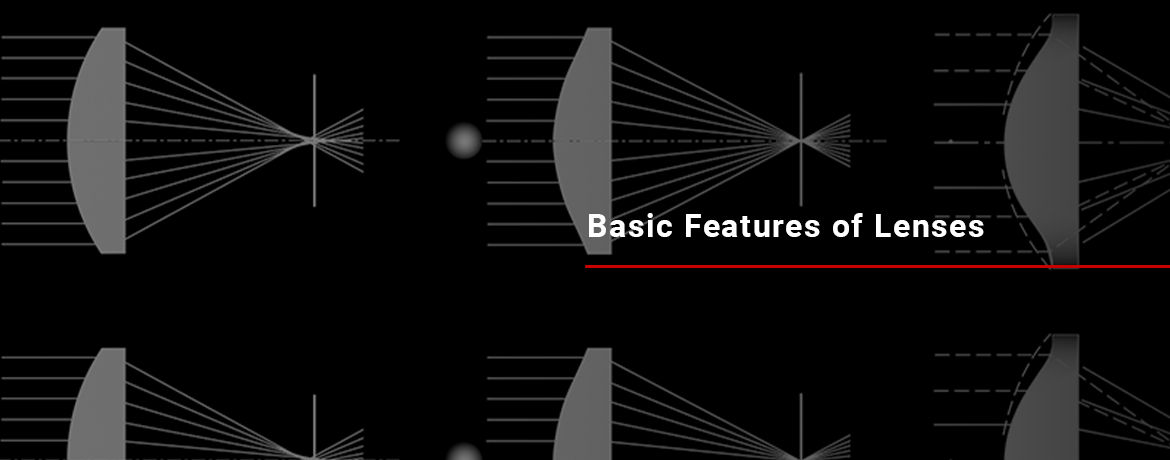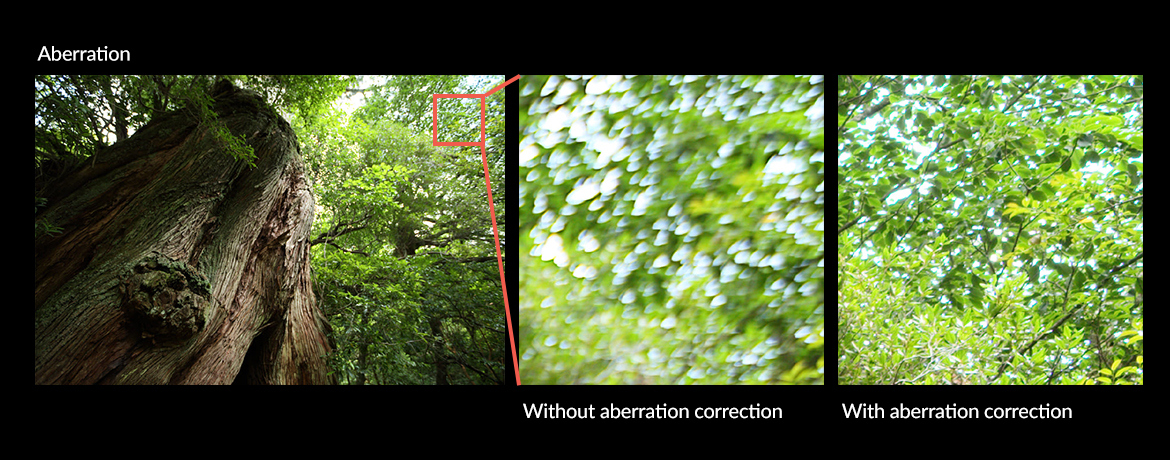
Aberration
Causes of Aberration
When light passes through a clear substance, it creates an effect known as refraction. The degree of refraction (that is, the refractive index of the material) differs for each wavelength (colour) of light. This difference in the refractive index is called dispersion.
A camera lens works just like a prism, separating the light that passes through it into a spectrum of rainbow colours. For the curved surface of a lens, the angle of refraction differs even for the same wavelength (colour), depending on the incident angle of the light. This can alter the point where the light beams of various wavelengths converge.
Ideally, all of the light should converge on the same point, regardless of the wavelength (colour). In reality, though, the design of an optical system prevents a camera from achieving this ideal condition, and therefore causes some deterioration in the image quality. This difference is called “aberration.” The magnitude of aberration is one of the indicators used to judge the quality of a lens.

Influence of Aberration and Countermeasures
The negative impact of aberration shows up in photographs as colour blur, comet-tail blur, or other problems such as a lack of sharpness or contrast. Since most aberration-related problems can be reduced by eliminating light coming from the periphery of the lens, one useful way to avoid the problem is to reduce the stop value of the aperture.
Aspherical lenses and UD lenses represent a technological approach to reducing image aberration. Canon not only offers lenses with optical-design-based compensation, but also lenses with aberration correction features that use an electronical (digital processing) method, in cases where the priority is to minimise the size and weight of the lens.

